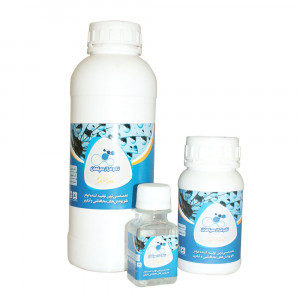| Nano Faraz Sepahan |

| No Title | 0.01 MB |
| Registration Date | 4 Dec 2019 |
| Revision Date | 4 Dec 2019 |
| Share |
Construction Masonry Materials
Waterproof SolutionHydrophobic Inhibition of changing the appearance of glass surfaces Without chemical and harmful effect Easy to clean Durable water repellent Long-term stability Resistance to UV radiation
Nowadays, the use of glass facades has attracted attention for many reasons, such as the beauty and low energy consumption and, of course, the reflection of sunlight in hot cities. Due to the height of the buildings, the need to clean the facade of the building during maintenance and repairs is important. There is also a need to clean the glass surface in applications such as solar cells made of glass plates that absorb sunlight and convert it to electricity. In addition, cleaning the surface of the car's glass is important to improve driving conditions. Washing with water and detergent is a common but costly way of cleaning of various types of glass surfaces. A good alternative to these methods is applying hydrophobic coatings. Applying of these coatings causes water particles to not adhere to the surface and also to remove dirt or particles from the surface by water droplets. The use of colloidal coatings containing nanoparticles creates a very high contact angle (usually over 100 degrees) as well as low surface energy and reduces the capillary property between the water droplets and the surface and creates a spherical shape in the droplets which results in easy moving on the surface. As a result, stains on the surface are prevented and no need for continuous washing and use of acidic detergents, as well as preventing blurring of glassy surfaces.
Due to the embeding of nanoparticles in the polymeric base, the proper hydrophobic property is created on the surface of glass. Micro and nano sized roughness due to the presence of nanoparticles, reduce the surface adhesion force between droplets of water and the surface of glass. On the other hand, the results of measurements of water contact angle are given in the table below. Increasing the contact angle by applying coatings containing nanoparticles changes the water droplets to a sphere shape condition and prevent them from sticking to the glass surface. Based on article 4-4 of the Iran-ISO national standard number 80004-2, the presence of silica nanoparticles in this product is confirmed.